We returned to Petra to do the walk to the tomb of Aaron (brother of Moses). (If you know nothing of the wonders of Petra look it up on Google, or check the last of my blogs from the last trip, and be amazed.)
There had been a number of changes to Petra. The most noticeable was the price! Two and half years ago it cost $35 per person for one day but this time it was $55. It will rise to $80 later this year! $20 of the price was a compulsory horse ride from the Tourist Centre to the start of the canyon, a distance of about 400 m. It was an enjoyable ride but....! It might not have stung quite so much if it had been offered at the end of the day when the feet are weary from traipsing around the site and the ride is uphill. Horses and carriages are no longer allowed in the canyon (except to carry the aged and disabled) and, in the past, this was a major source of income for the Bedouin. So our guess is that the government has done a deal with the Bedouins to compensate them for their loss of income. Quite a few tourists were really peeved because they didn't even get the ride as no horses were available when they arrived.
Walking the 1.2 km through the very narrow canyon that opens onto this, the 1st century BC Treasury Building carved from the rock by the Nabateans

was not as magical as the first time, but was still awesome.
We hired a youth with his donkey to guide us to Aaron's tomb. This track, which takes about six hours return, is little travelled by tourists, with only three or four taking the walk each month. Muslim pilgrims sometimes make the walk and a major festival is celebrated there later in the year.
It was interesting that the Nabatean carvings continued well beyond the major tourist site
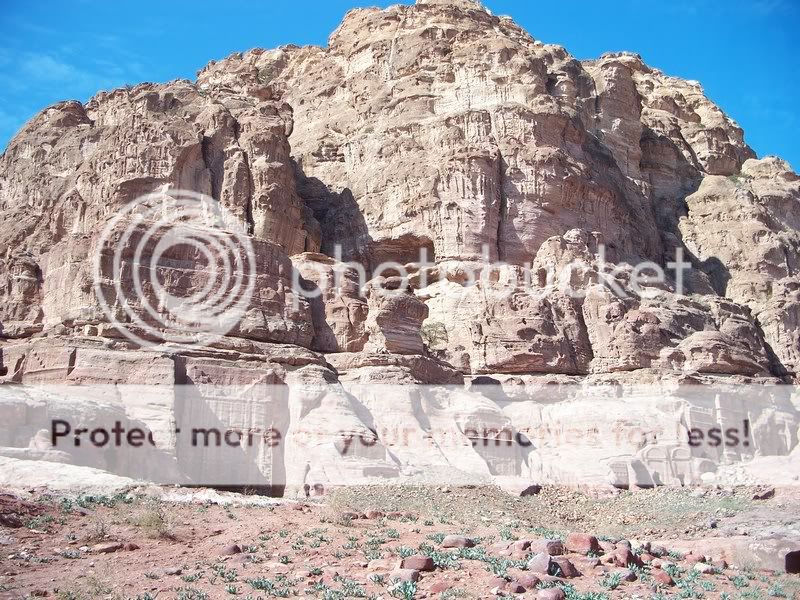
and some were inhabited by the Bedouin.
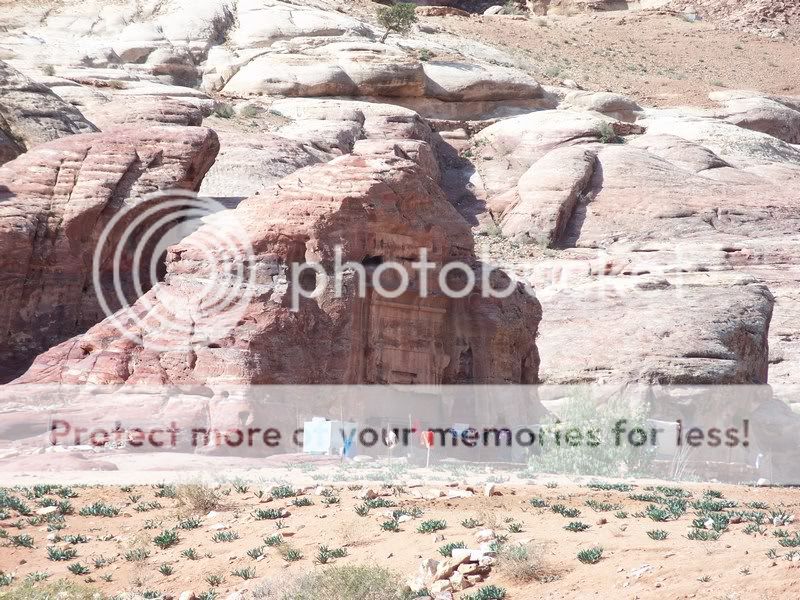
After three hours of walking we reached the mosque containing the tomb.
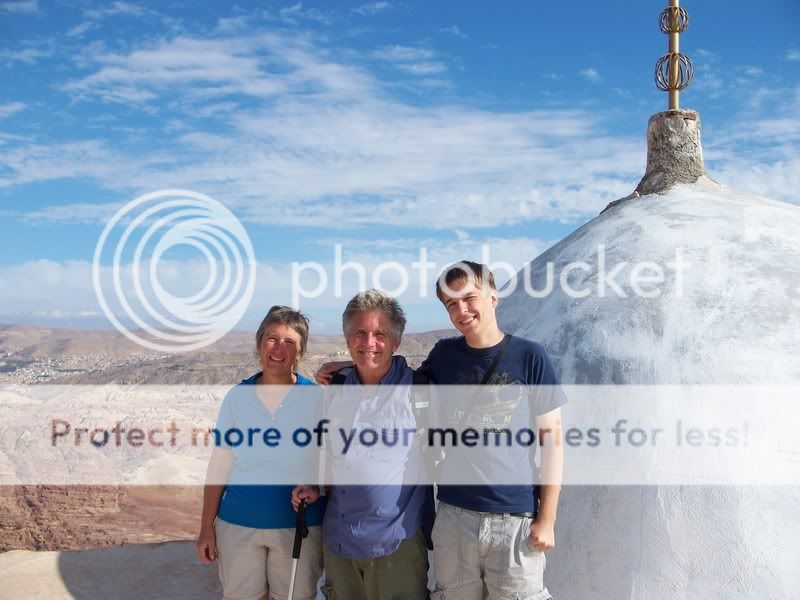
Originally a monastery occupied this spot but in the 12th century a sultan built the small mosque on the site. The mosque and the tomb were unremarkable

but the Bedouin tea served by the guardian was, the guys said, absolutely delicious and the panoramic view was fantastic.

On the return walk, Ken suffered exhaustion. This was due, I think, to a very poor sleep the night before courtesy of the cold and the fact that he got too frozen as we walked in the afternoon winds. He was fine, then suddenly began to shiver uncontrollably and so we put him on the donkey for the last kilometre or so.
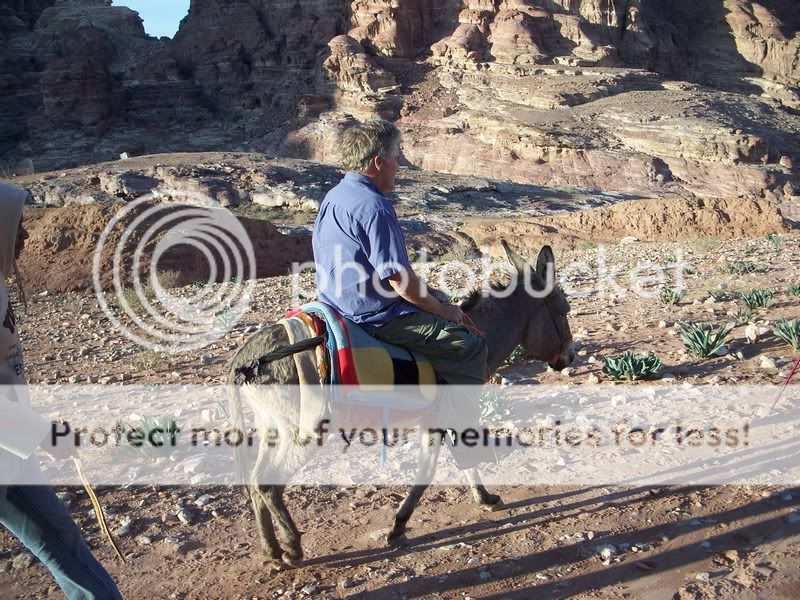
He even paid $5 for the short horse ride uphill. Food and sleep restored him.
On the second day at Petra we climbed to the High Place of Sacrifice. In the Old Testament there are many references to where the Israelites, succumbing to the religions of their neighbours, built altars in the High Places. I had supposedly climbed to this high place on the previous trip when I went in late to Petra to photograph the sunset. Climbing the second time, I realised that, in my hurry to reach the summit before the sunset, I had missed one of the turns and made it to a high place: but it was not the high place of sacrifice for I had never seen this altar area
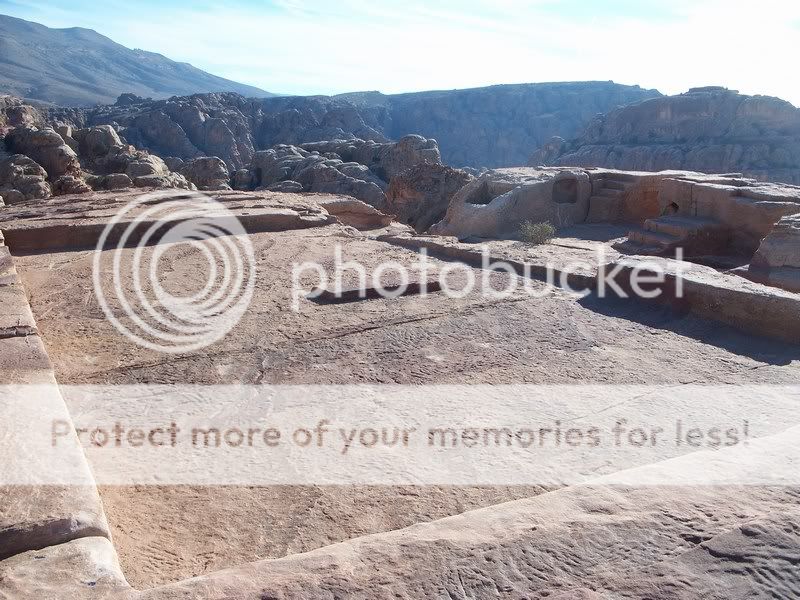
or this purification basin and bowl to catch the sacrificial blood.
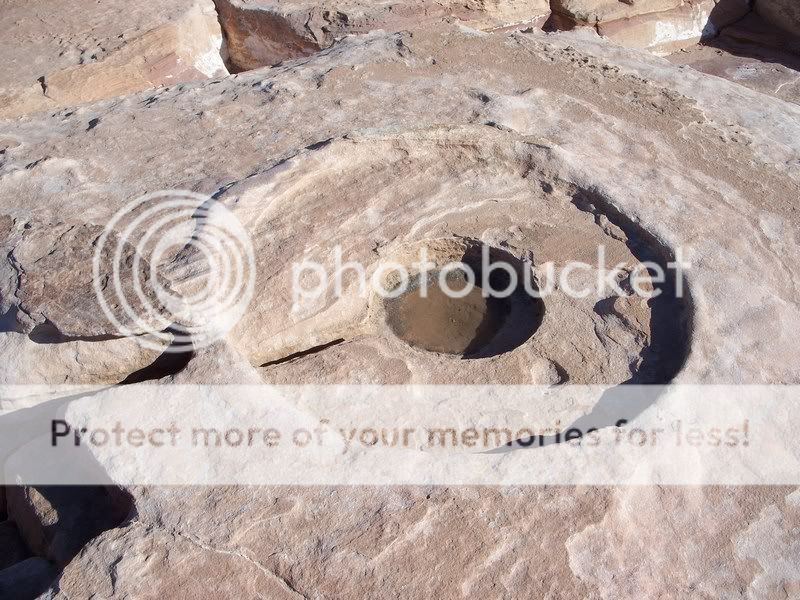
Again the view was worth the walk.
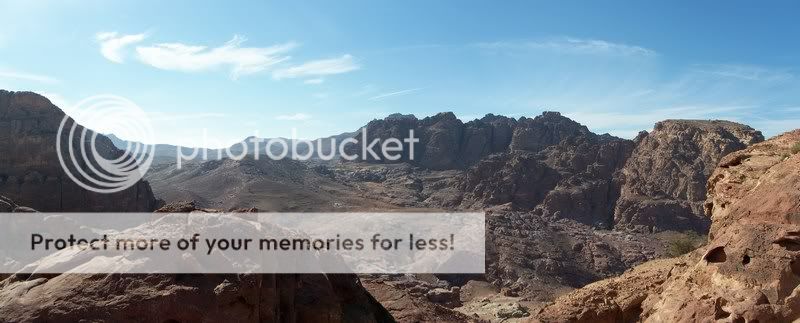
Ken had particularly wanted to look again at the theatre, Nabatean not Roman, which had been carved out of the hillside!

From Petra we went north to Jerash, a well preserved Roman ruin. We watched the very kitsch re-enactment of a chariot race and gladiator fight from a nearby hillock with the other tourists who did not want to pay the extra $20 for a ticket to sit in the hippodrome, but we were allowed to walk into the stadium just after the show and see everyone close up anyway.

As in other sites laid low by earthquakes, there were paved colonnades, temples, Roman baths, Turkish homes and Byzantine churches (from later eras) and Roman theatres, but this musical elaboration was hardly customary.
Video coming soon.
That night we were back in Madaba in the hotel that we stayed in on the first trip. The hotel owner recognised us, as did the proprietor of the Ayola Cafe, where the guys had gone every day last time to buy an espresso coffee (and food) and as did the barber, who recognised Ken's hair but not his face. It took us several days to find the particular pastry shop that had delighted us previously. Not only did the owner seem to recognise us, but this time he was actually friendly.
Despite the overcast weather, I wanted to go back to Mt Nebo. On our previous trip I'd imagined how peeved Moses would have been if, after 40 years of desert wandering, he had looked out on what I now saw of the 'Promised Land', which was bone-dry, treeless desert. Having been to Jerash and seen the lovely rolling green hills, I wondered whether, in winter—Jordan's wet season—the Mt Nebo view might be different and worth a 40-year wait. It wasn't.
The Israeli's have simply taken too much water from the Jordan (believed to be once 200m wide but now only about eight) and the green is reduced to narrow strips along the sides of the river.
Until recently, Madaba was primarily a Christian town with an uninterrupted tradition of Christianity from the 1st century. Now, the Muslim population is greater than the Christian one, but there is still a strong Greek Orthodox and Roman Catholic presence in the town. Madaba is renowned for the mosaics recovered from its many 6th century Byzantine churches. The most famous is the one found in St George, a Greek Orthodox Church. It depicts a very early map of the Holy Land showing Jerusalem, Jericho, Nablus, Hebron, the Nile Delta in Egypt and South Lebanon. Only part of the 16 m x 6 m map remains. This is Jerusalem,
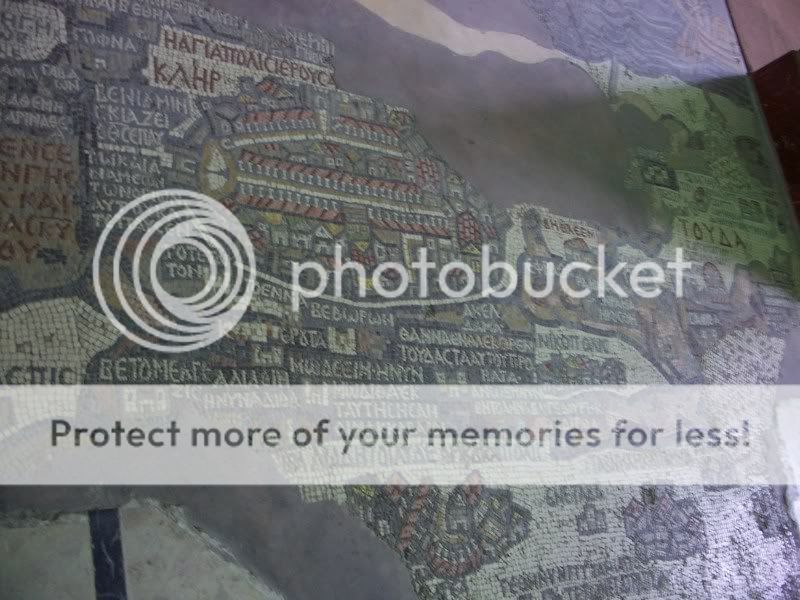
and this my favourite part

with a fish turning back once it reaches the salty Dead Sea.
The walls of St George are covered with mosaics created by a modern day mosaic maker. I find the imagery in this one interesting.
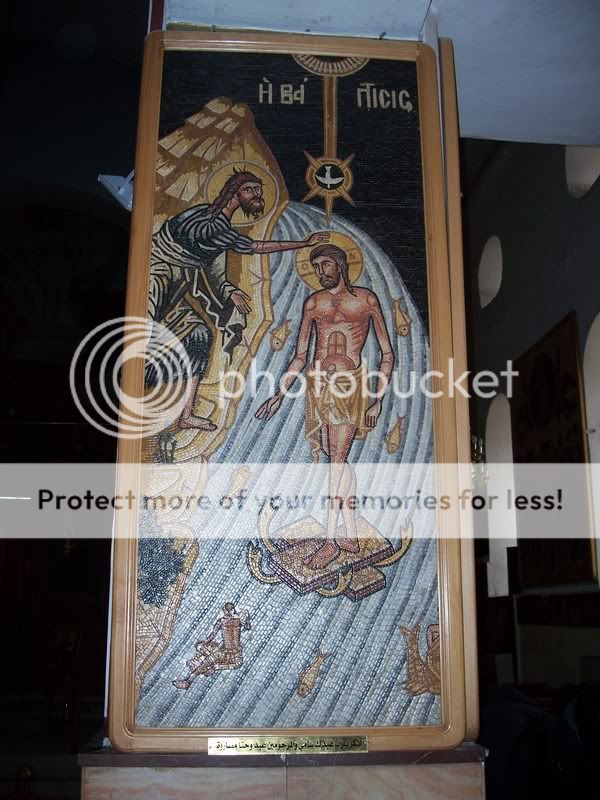
We chatted for quite a while to a young man called Ra'd in the Tourist Office. He invited us back to his home. He and his wife Hadeel with their two young children were absolutely delightful. They are a Roman Catholic family. After feeding us a small plate of delicious rice with meat and vegies, they took us to Hadeel's mum's house. Their mum happens to be an ex- high school cooking teacher and just happened to have cooked some scrumptious spinach buns and to have on hand bread, humus, sesame seeds with oil and fava beans to accompany it. It was a wild night of food, broken English, broken Arabic, laughter, singing and fun. We were made to promise that when we returned we would come for a proper meal. A difficult promise to make... NOT.
Madaba was rainy and cold and we found we were choosing to eat at places that were warm rather than deciding on the price or the quality of their food. Our hotel room was chilly and, along with the other tourists, we spent our evenings in the foyer where it was warmer.
The Jordanians are groaning under the rise in living costs. While food is still cheap, nothing else is. Petrol, power and water cost. Public schools aren't good and private schools expensive. The hotel manager's said that his father had a life-saving emergency operation to his leg that cost $25,000 with follow up injections that cost $500 a month and also said that he and his wife waited five years before deciding to have what will be their only child. Ra'd and Hadeel said that because of their finances they would definitely have no more than their two children. Both couples would migrate to Australia, or possibly Canada or the US, if they could.
Hi guys, it's Mohammad from down under. Hope you have wonderful journey there. Very impressive blog keep up and good luck.
ReplyDelete